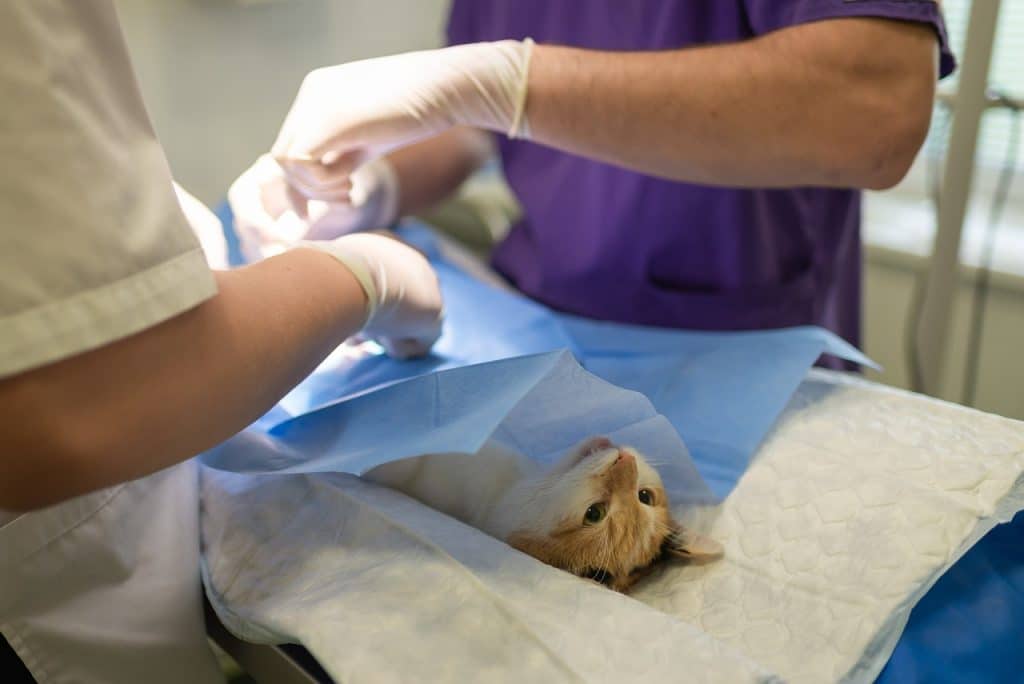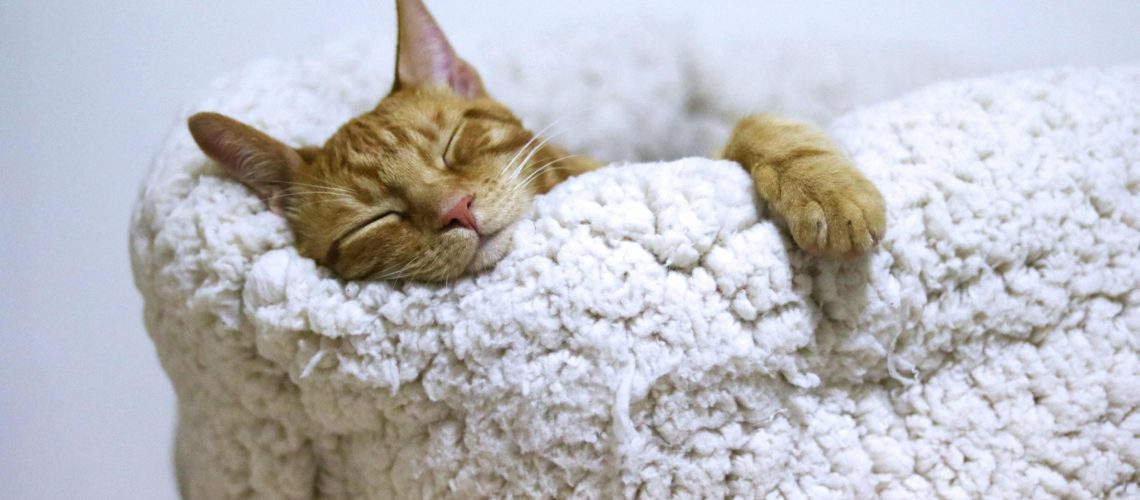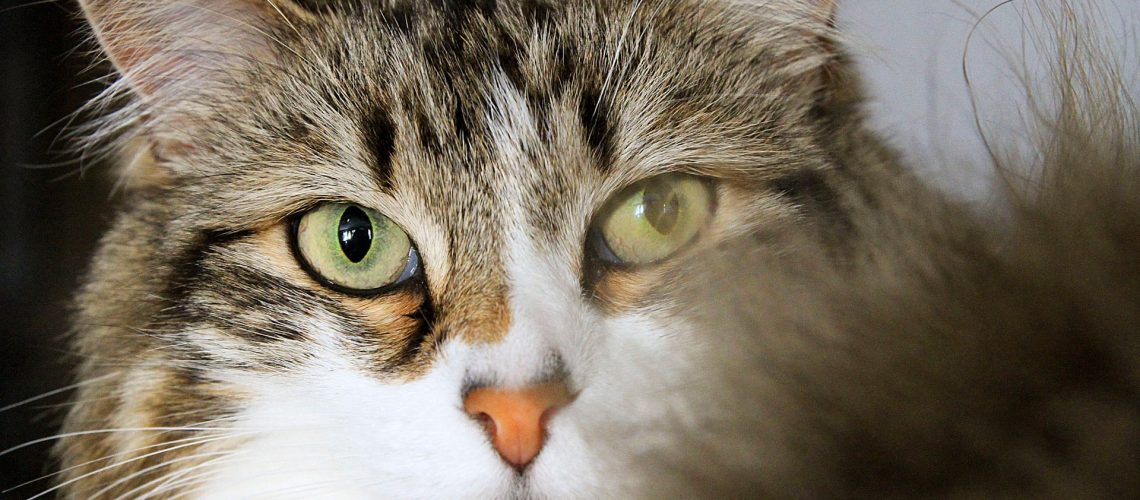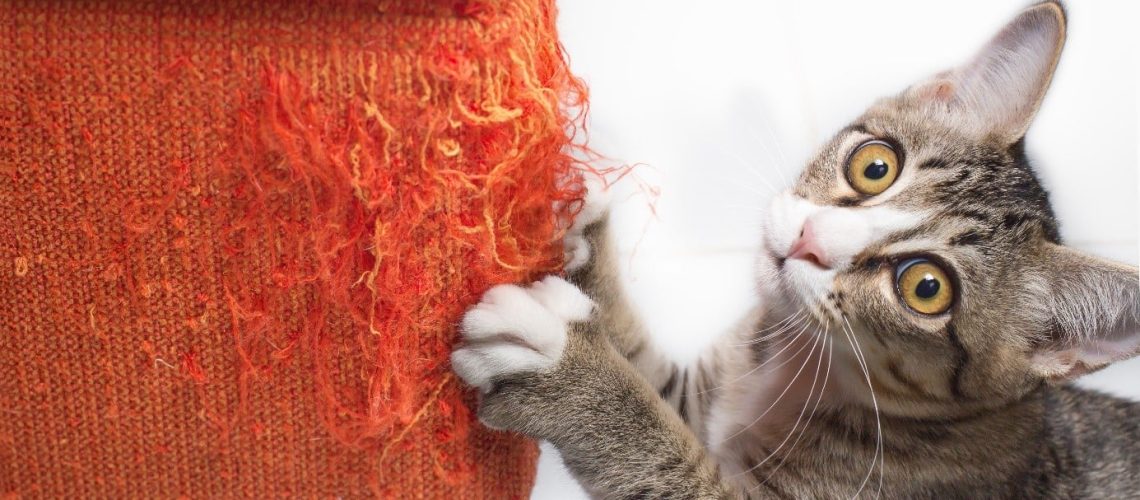If you notice that your cat is urinating blood, it’s quite a shock. In this blog, we are going to look at why this can happen. We will discuss several most common causes, such as problems with the bladder or even stress. It is very important to know when to take your cat to the vet.
That’s why we also tell you about the signs to look out for. The vet can help, but you can also do things yourself to help your cat. There are ways to help your cat feel better at home. Together we can take care of your cat’s well-being

What could be causes?
Cystitis
When a cat has cystitis, the inside of its bladder is irritated and inflamed. This can be very painful for your cat.
It can cause blood to get into your cat’s urine. As a result, your cat may try to urinate more often and produce little urine. It may also be painful for him to urinate.
You may notice that your cat is uncomfortable and may meow at the litter box. This is because urination hurts. Bladder infection in cats can have several common causes, including bacteria. Stress can also play a role.
Bladder Stones
Bladder stones are hard pieces of material that form in your cat’s bladder. These stones can irritate and even damage the bladder, leading to bleeding during urination. Your cat may experience pain and may even have difficulty urinating. These stones may need to be surgically removed, depending on their size and the severity of the symptoms.
Stress
Stress is not just something humans experience; cats can suffer from it, too. Stressful situations such as changes can lead to health problems such as cystitis. This type of bladder problem is called “idiopathic cystitis,” which means it is caused by stress. It can lead to blood in the urine because it irritates the bladder.
Tumors
Tumors in the bladder or urinary tract are less common, but they can occur in cats. These tumors can cause bleeding and seriously affect your cat’s health. It is important to have this checked out at a veterinarian consultation because tumors require specific treatments, such as surgery or medication.
Injuries
If your cat has suffered an injury from a fall or collision, for example, it can cause internal damage. This can lead to blood in the urine if the urinary tract or other internal organs are damaged. With such injuries, prompt medical attention is crucial to prevent further complications.

What does the stool look like?
If your cat urinates blood, it can sometimes affect how his stool looks. But that’s not always the case.
Generally, your cat’s stool looks normal. Unless there are other health problems as well. The main thing to watch for is whether there is blood present in or around the stool.
Blood in the stool may look like red spots or it may be darker. This means that blood has been in the body for a while. This is called “tarry” stool and may indicate internal bleeding. It is then very important to take your cat to the veterinarian as soon as possible.
In most cases of male cats who urinate blood, the stool will appear normal. Unless some cats have specific problems such as intestinal problems or infections that also affect the stool.
When should I go to the veterinarian?
Here are a few situations when you should definitely go to the vet:
- If you see blood in the urine: Even a small amount of blood is a sign to visit the vet.
- If your cat seems to be in pain: If your cat meows or seems uncomfortable while urinating, this is a sign of pain.
- Change in urination behavior: Is your cat going more often than usual, or trying to urinate without much coming out? These are alarm signs.
- Lethargy or not eating: If your cat has less energy or stops eating, this may indicate an underlying problem.

Veterinarian treatment
When you take your cat to the veterinarian, he will first conduct an examination to find out what is going on.
This may start with an interview where you have to answer questions about what you have noticed about your cat.
After that, the veterinarian will probably do a urinalysis. This helps check for infections or signs of bladder stones. Sometimes a blood test or ultrasound may also be needed to check the health of your cat’s organs.
Depending on what the veterinarian finds, treatment may vary. This may include medication for infections or pain. Or sometimes even surgery if bladder stones need to be removed.
How can I help my cat myself?
Besides visiting the vet, there are a few things you can do yourself. Here are some tips:
- Provide plenty of water: Put clean, fresh water bowls in several places around the house to encourage your cat to drink more. This helps flush out the urinary tract.
- Quiet environment: Stress can contribute to urinary tract problems. Try to create a calm and safe place where your cat can relax.
- Pay attention to diet: Sometimes the veterinarian may recommend special foods that help support urinary tract health. Follow the dietary advice carefully.
- Keep the litter box clean: Make sure the litter box is always clean, as a dirty box can cause extra stress and discourage your cat from using it.
- Observe your cat: Keep paying attention to how often your cat pees and if there are any changes. Contact your veterinarian if you see more unusual symptoms.

Get cat insurance
If your cat is urinating blood, it may indicate health problems that sometimes require expensive treatments. That’s why it’s a smart idea to get cat insurance. With insurance, you can cover vet bills, so you don’t have to worry about high bills and can concentrate fully on caring for your cat.
On our website, we have a wide range of insurances to suit different needs








